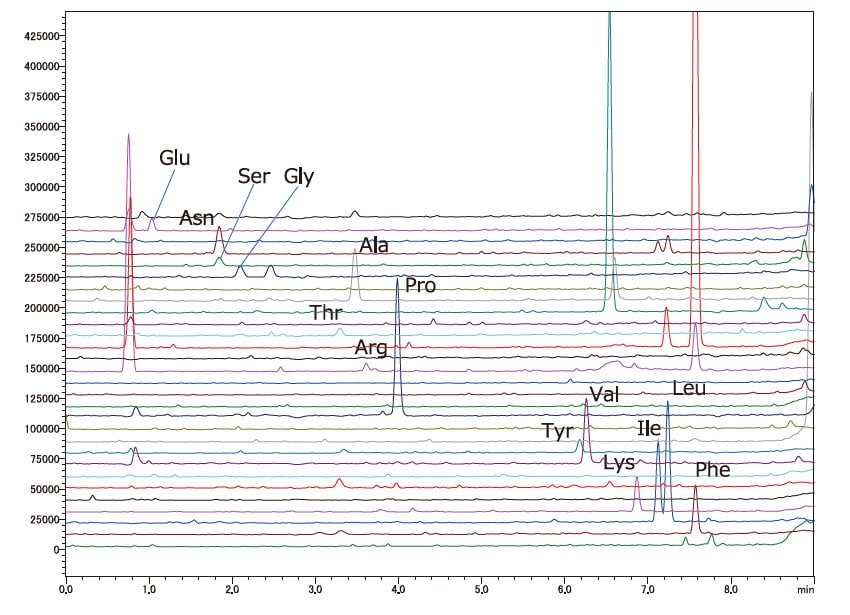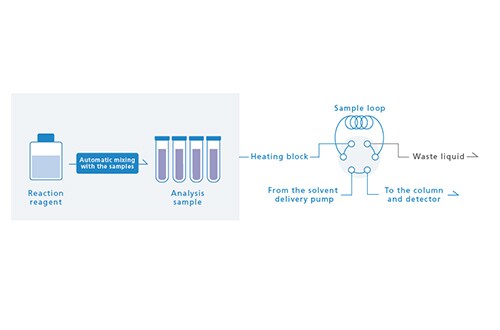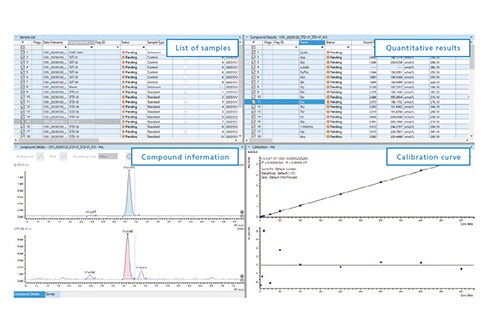UF-Amino Station
LC/MS Ultra Fast Amino Acid Analysis System
A variety of separation and detection methods are used in amino acid analysis via HPLC. When multiple amino acids are subjected to a batch analysis, considerable time is required for separation, which reduces sample throughput. UF-Amino Station, which was developed in collaboration with Ajinomoto Co., Ltd., uses a special high-speed and high-separation column and the LCMS-2020 mass spectrometer, to perform batch analyses of 38* amino acids and amino acid-related components in a mere 9 minutes. Derivatization reactions are performed automatically, so tedious manual procedures are not required. UF-Amino Station is particularly effective in the field of biochemistry, where analyses of culture media, plasma, and other biological samples are required.
*Allows the analysis of 38 amino acid-related components, such as anserine, citrulline, taurine, and GABA (γ-aminobutyric acid), in addition to the 20 major amino acid components.
This product is currently available only in Japan. Please contact your local Shimadzu representative if you are interested.
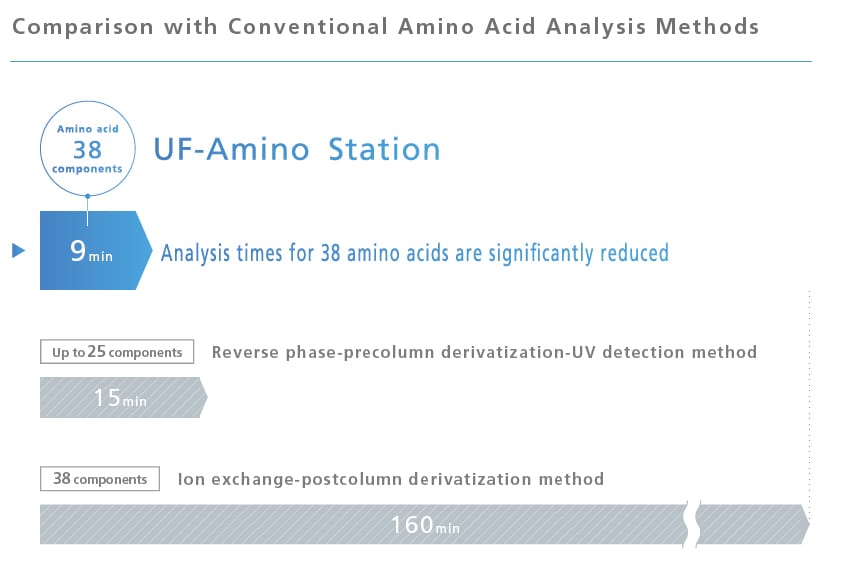
Features
Latest Webinar
-
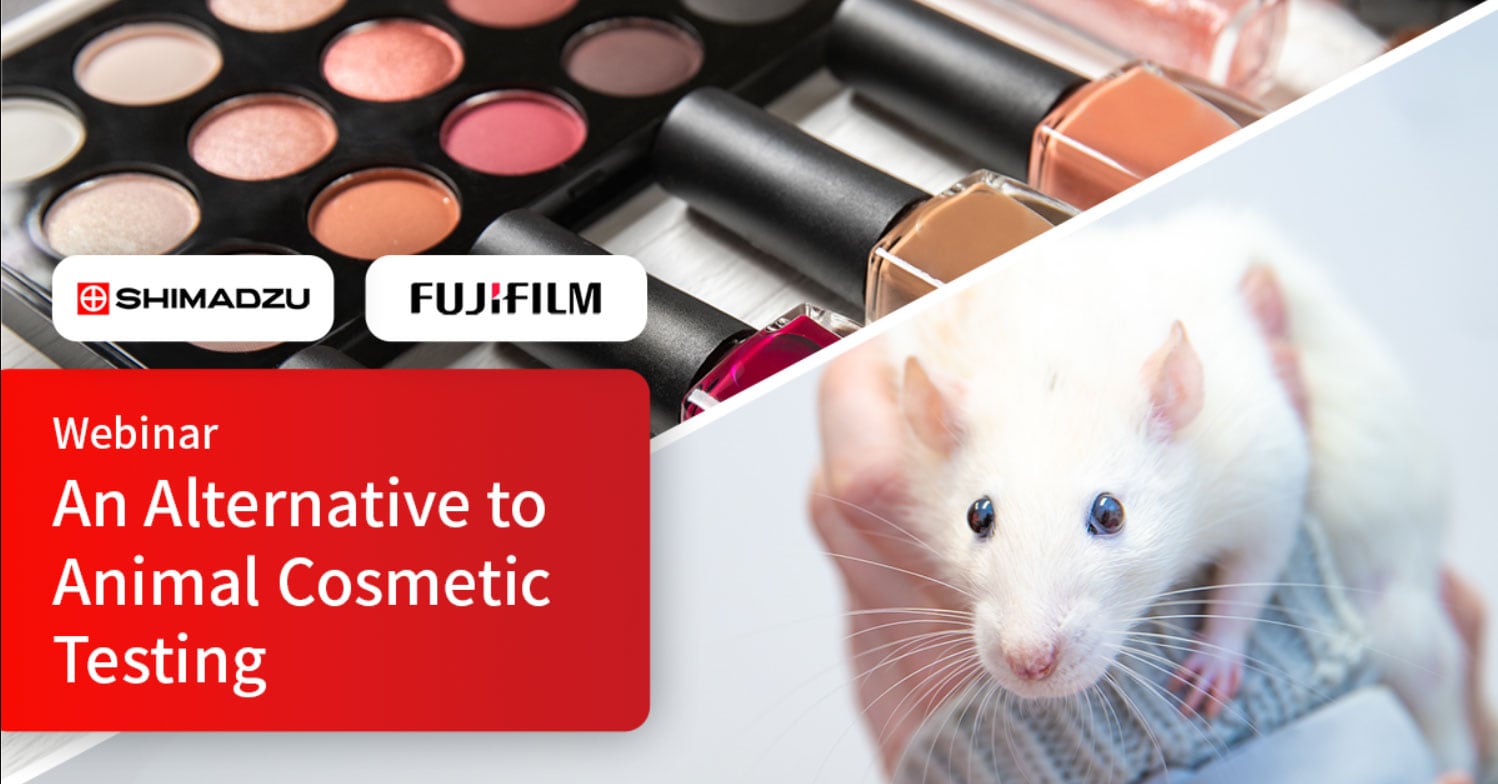
2023-04-26
The Newest Alternative to Animal Testing for Skin Sensitization
In recent years, there has been a growing movement to promote alternative methods to animal testing and the EU and a few other countries have even moved to ban the import and sale of cosmetics that have been tested on animals. The Amino acid Derivative Reactivity Assay (ADRA) Method developed by Fujifilm, is an innovative alternative test method for skin sensitization without the use of animals and it was adopted by the OECD in 2019 as a reliable test method. A revision of the Test Guideline (TG) was carried out in 2022, adding an evaluation for the sensitization potential of mixtures by the gravimetric approach and the ADRA-fluorescence method. In this webinar, we will present the technical background of the ADRA method, the use of reagent kits to perform ADRA testing, and our solutions for ADRA analysis that deliver both enhanced selectivity and high-speed testing. Register for this webinar and learn more about how the ADRA method will help you better test the safety of cosmetics and pharmaceuticals.
External Link
View Details
News / Events
-
New Method Development System
LabSolutions™ MD improves method development efficiency by taking an Analytical Quality by Design (AQbD) approach. This software efficiently develops highly reliable analysis methods by configuring mobile phases, columns, and other parameters using an analysis function that automatically generates analysis schedules with the experimental design method and a data analysis function that plots a design space and predicted chromatogram.
-
New Nexera Prep Preparative Purification Liquid Chromatograph
The Nexera™ Prep Purification System provides optimal solutions for your laboratory needs.
-
Shimadzu has released the Shim-vial™ H glass, S glass.
Shimadzu provides high-quality vials that thoroughly eliminate these risks by visually inspecting each vial, allowing them to be used with confidence.
-
Shimadzu has released the MUP-3100, Fully Automated Sample Preparation Module for Glycan Analysis
Shimadzu developed the MUP-3100 Fully Automated Sample Preparation Module for Glycan Analysis in conjunction with Sumitomo Bakelite Co., Ltd., for use with their antibody N-glycan analysis kit. The MUP-3100 eliminates manual sample preparation, increases overall analysis throughput, and improves reproducibility.
-
Ion Chromatography Solutions for Environmental Analysis
Shimadzu has focused on the development of instruments for environmental analysis for decades, helping scientists to detect, identify and quantify trace-level pollutants and meet environmental testing demands, for both regulatory purposes and to advance Research & Development.
-
Shimadzu has released the Peakintelligence™ for LC
Liquid chromatography is now an indispensable analytical technique used in pharmaceutical, food, and a wide variety of other industries. In these industries, there is a need for efficient data analysis methods that are not user-dependent. Peakintelligence for LC software includes AI algorithm* that was developed by learning expert peak integration skills.




